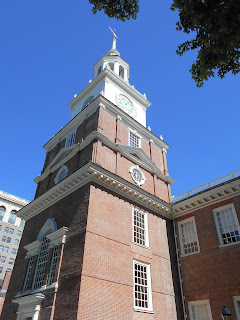So I thought you might find a
series on the children of another British monarch interesting as well—and more
of those offspring were important on
a world level. I’m talking about the fifteen children of King George III and
his wife Queen Charlotte. Unlike Victoria’s brood, not all lived to adulthood
(in the 18th century, even the King’s children could escape the
era’s higher infant mortality rate.) Not all married and had children (unlike
all of Victoria’s children, even the sickly Leopold.) But I find them on the
whole a more sympathetic and vital group of individuals, with more interesting
lives, and I hope you will too.
Before we dive into the life
of George’s second child, Frederick, (the eldest of course being our old friend
Prinny, perhaps better know as King George IV, has already been a topic of
discussion here and here and here) I thought a little background information
might be in order.
George III came to the throne
in 1760 at age 22—an earnest, somewhat plodding but basically good-hearted
young man—and one of his first concerns was finding a wife in order to beget an
heir and secure the succession. He’d been briefly enamored with Lady Sarah
Lennox, daughter of the Duke of Richmond (and one of the Lennox sisters in
author Stella Tilyard’s excellent book Aristocrats)
but both his mother and his mentor Lord Bute, who held a great deal of
influence over George, felt that an English bride would not be advisable. And so,
not quite a year later, he married a foreign bride, one his mother felt she
could comfortably bully—a Princess Sophia Charlotte of the tiny German
principality of Mecklenburg-Strelitz.
Charlotte was just 18, and had
never left her country before (nor would she see it again.) Though her
education had been mediocre she was a bright young woman, fond of reading and
eager to expand her intellectual horizons. She spoke no English on her arrival...and
in fact, within six hours of arriving in London (after a difficult and stormy
passage across the North Sea), she met her husband-to-be for the first time, was
hastily dressed in her wedding finery, and married to him.
George and Charlotte seemed to
have become genuinely fond of each other; they shared an interest in learning
and music, and while George made it clear that he expected his wife to keep
strictly to home and hearth (so to speak--we're talking 18th century court life here!) and not meddle in government, she was
a quiet influence on him. She also admirably fulfilled her duty to her husband
and presented him with a son just eleven months later...and fourteen more
children over the next twenty-one years.






























